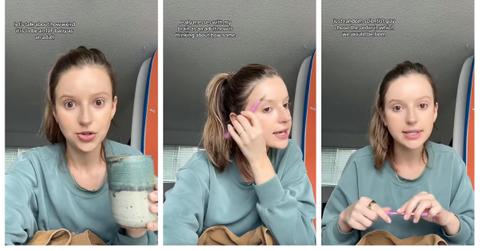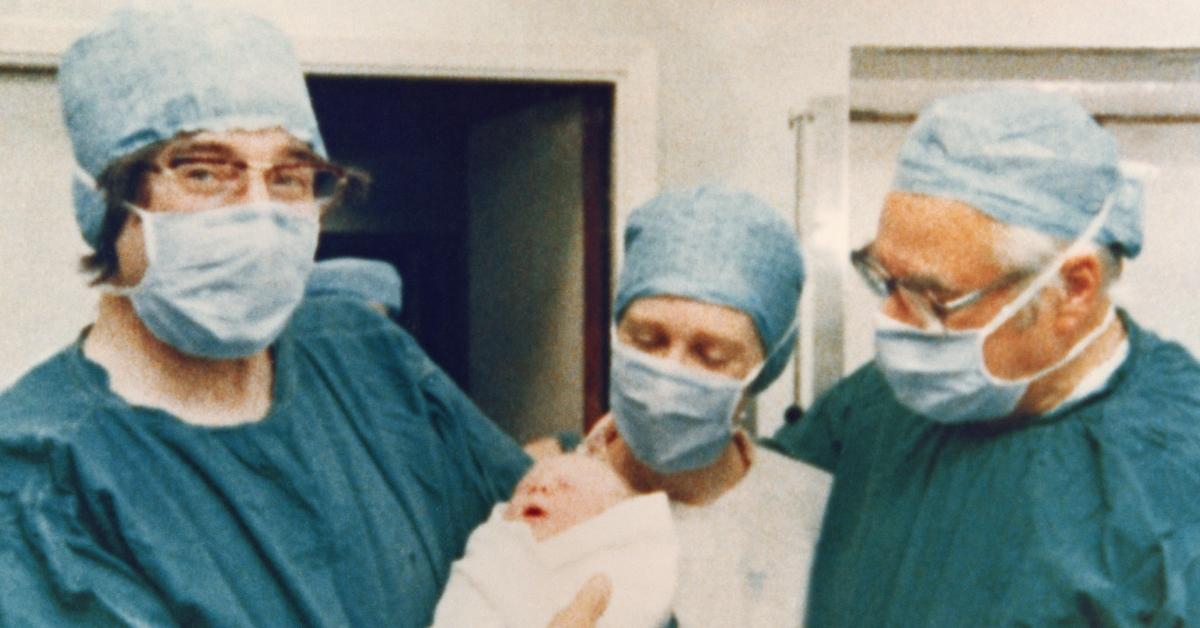This Woman Was Born via IVF and What She Says About It Has Us Feeling Kind of Weird
Published July 3 2023, 11:28 a.m. ET

Adult woman born via IVF has some thoughts.
According to the Pacific Fertility Center of Los Angeles, in vitro fertilization (IVF) was "first used in the 1950s via medical testing and observation of animals." In the early 1970s, testing on humans had begun and by 1978, "Dr. Patrick Steptoe and Dr. Robert Edwards performed the procedure in England, resulting in the birth of Louise Brown on July 25, 1978." As of the time of this writing, she is still alive.
Fast forward 18 years to 1996 when Michel Janse, aka @michel.c.janse on TikTok, was born via IVF. Three years later her sister was born via the same crop of harvested embryos. In a rather wild TikTok, Michel laid out some interesting thoughts about being an adult IVF baby, which included an idea about what to do with the remaining fertilized embryos that belong to her parents. Read on for this possible body horror movie idea.

Louise Brown, first IVF baby, born July 25, 1978.
This IVF baby is now a full grown adult and definitely has some thoughts about it.
As Michel artfully puts on makeup, she shares some thoughts about being an adult IVF baby. Michel says she and her sister are from the "same batch." What this means is, they were "extracted at the exact same time and fertilized at the exact same time." However, Michel's sister sat on ice for another three years. Is this where the idea for Frozen came from?
Because Michel and her sister were "conceived" simultaneously, they refer to each other as twins. Then she goes down an IVF rabbit hole and it gets just as weird as Wonderland was for Alice. "One thing that always messes with my brain as an adult now, is thinking about how some random scientist guy chose the order in which we would be born," she says.
Michel marvels at that order in which they were picked because she possesses BSE (Big Sister Energy). Of course what Michel doesn't acknowledge is the fact that she probably feels like a big sister because that's her role. It sounds like she's suggesting that she still would have had that vibe, had she been chosen second. That's not how that works.
What Michel appears to be addressing is how much of her life, and everyone's lives, are left entirely up to chance. Her fertilized embryo was chosen first, and her sister Jacqueline's (we finally get a name) was plucked out of a petri dish second. She can't imagine what her life would be like if the order were reversed except she kind of can because anecdotal evidence suggests their roles would be reversed as well.
Things now take a very weird turn.
Michel labels herself as someone being at a "childbearing age" and as such, is having some decidedly "weird thoughts" about her own conception. Evidently her parents still have frozen fertilized embryos milling about, with which they don't know what to do. Luckily for her parents, the first two rounds of IVF worked.
"There are some of my 'twins' per se, still sitting in a lab," says Michel. "You could donate them, but now the procedure is so much more accessible than it was almost 30 years ago." She poses the question, are these embryos still viable? And furthermore, who would want them? People who can't conceive would probably want them, but we digress.
Michel seems unusually interested in the fate of these embryos, which is why she has come up with a truly bonkers idea. "Tell me why it has always been my desire to grow up, get married ... and have my kids with my partner but eventually also go through the implant process myself and give birth to one of my twin embryos." What in the David Cronenberg film nonsense, is this?
Once again, Michel centers herself in a very strange way. Specifically, she would want a boy because in her mind, this would be her male sibling, not connecting the fact that he would be raised by her not her parents. That's the sibling part. It's not that Michel wants to do something with these fertilized embryos that have been sitting in purgatory for over 25 years, it's that she wants to birth her own brother.
We are assured by Michel that she won't be moving forward with this wacky birth plan, but she's very tempted to do so. What we find strange is the fact that her parents are still paying for the storage of these frozen embryos. Now more than ever, it's time to "let it go, let it go."
